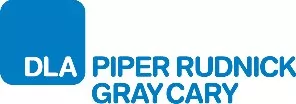On June 14, 2004, the U.S. Supreme Court, in an 8-1 decision, held that a claim of constructive discharge is not necessarily a tangible employment action preventing an employer from raising the Ellerth/ Faragher affirmative defense. The Court resolved the disagreement among the circuits regarding this issue and found that the Third Circuit Court of Appeals had erred in declaring the Ellerth/Faragher affirmative defense never available in constructive discharge cases.
The Supreme Court explained that the Ellerth/Faragher affirmative defense is available to an employer whose supervisor is charged with harassment unless the .supervisor.s official act. precipitated the constructive discharge. An .official act. is, for example, a demotion or reduction in compensation demonstrating .beyond question. the supervisor used his managerial or controlling position to cause the employee to leave the work force. .Official acts. amount to tangible employment actions and, thus, prevent an employer from asserting the Ellerth/Faragher affirmative defense.
Background
Nancy Drew Suders, a police communications operator with the Pennsylvania State Police (PSP), resigned after several months of .name calling, repeated episodes of explicit sexual gesturing, obscene and offensive sexual conversations, and the posting of vulgar images. by her male supervisors. She sued the PSP claiming sexual harassment and constructive discharge in violation of Title VII of the Civil Rights Act of 1964.
Without addressing Suders. constructive discharge claim, the district court granted PSP.s motion for summary judgment finding that PSP was not vicariously liable for the supervisors. conduct because Suders failed to use PSP.s internal anti-harassment procedures. The Third Circuit Court of Appeals reversed and remanded the case. It found that Suders .raised genuine issues of material fact as to her claim of constructive discharge,. and her employer was .precluded from asserting the affirmative defense to liability. under Ellerth/Faragher. The circuit held that .a constructive discharge, when proved, constitutes a tangible employment action.. Suders v. Easton, 325 F. 2d 432, 447 (3d Cir. 2003). The circuit reasoned that a constructive discharge (like a termination) ends the employment relationship and inflicts .the same type of .direct economic harm. as the employment actions in Ellerth and Faragher . . .. Id. at 460.
The U.S. Supreme Court granted certiorari to resolve the disagreement among the circuit courts as to whether constructive discharge constitutes a tangible employment action. Justice Ruth Ginsburg found Suders involved a .subset. of Title VII constructive discharge claims . those attributable to a hostile work environment caused by a supervisor. In the absence of .an official act of the enterprise,. an employer generally does not suspect an employee.s resignation is out of the ordinary. Accordingly, the employer should have the chance to demonstrate it is not vicariously liable by asserting the Ellerth/Faragher affirmative defense.
Significance
- Employers should continue to maintain strong antiharassment policies and internal mechanisms for the reporting and investigation of harassment complaints;
- The Ellerth/Faragher affirmative defense is alive and well;
- Employers may be able to avoid vicarious liability in cases alleging constructive discharge;
- When an .official act. does not underlie the constructive discharge, the employer may assert the Ellerth/Faragher affirmative defense;
- The definition of .official acts,. which may prevent an employer from asserting the Ellerth/Faragher affirmative defense in constructive discharge cases, is unclear;
- However, constructive discharges resulting from humiliating demotions, extreme pay cuts, transfers to intolerable work conditions, and the like, may constitute tangible employment actions preventing an employer from asserting the Ellerth/Faragher affirmative defense; and
- The opinion is limited to the .subset. of constructive discharge claims arising from a hostile work environment claim attributable to a supervisor.
This article is intended to provide information on recent legal developments. It should not be construed as legal advice or legal opinion on specific facts. Pursuant to applicable Rules of Professional Conduct, it may constitute advertising.

